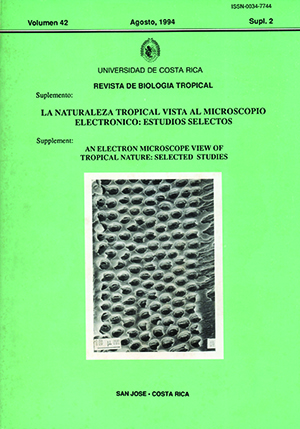Abstract
Negative staining, thin sections, and surface replica methods were used to produce ultrastructural descriptions of curved-shaped, flagelated bacteria Campylobacter jejuni, Helicobacter pylori, and H. muridarum, the last one from the ileon of mice. The former has nude monotrichous flagella, the others have the sheated lobotrichous type. H. muridarum presents 10-12 periplasmic fibers. A cladogram of some gastric bacteria, based on the evolutionary history of the mammal hosts, hypothesizes that (1) the genus Helicobacter evolved about 65 million years ago and that (2) primate parasites such as H. pylori and H. nemestrinae are close relatives, as are parasites of carnivores which include H. mustelae, H.felis and H. acynonyx.
This work is licensed under a Creative Commons Attribution 4.0 International License.
Copyright (c) 1994 Revista de Biología Tropical

